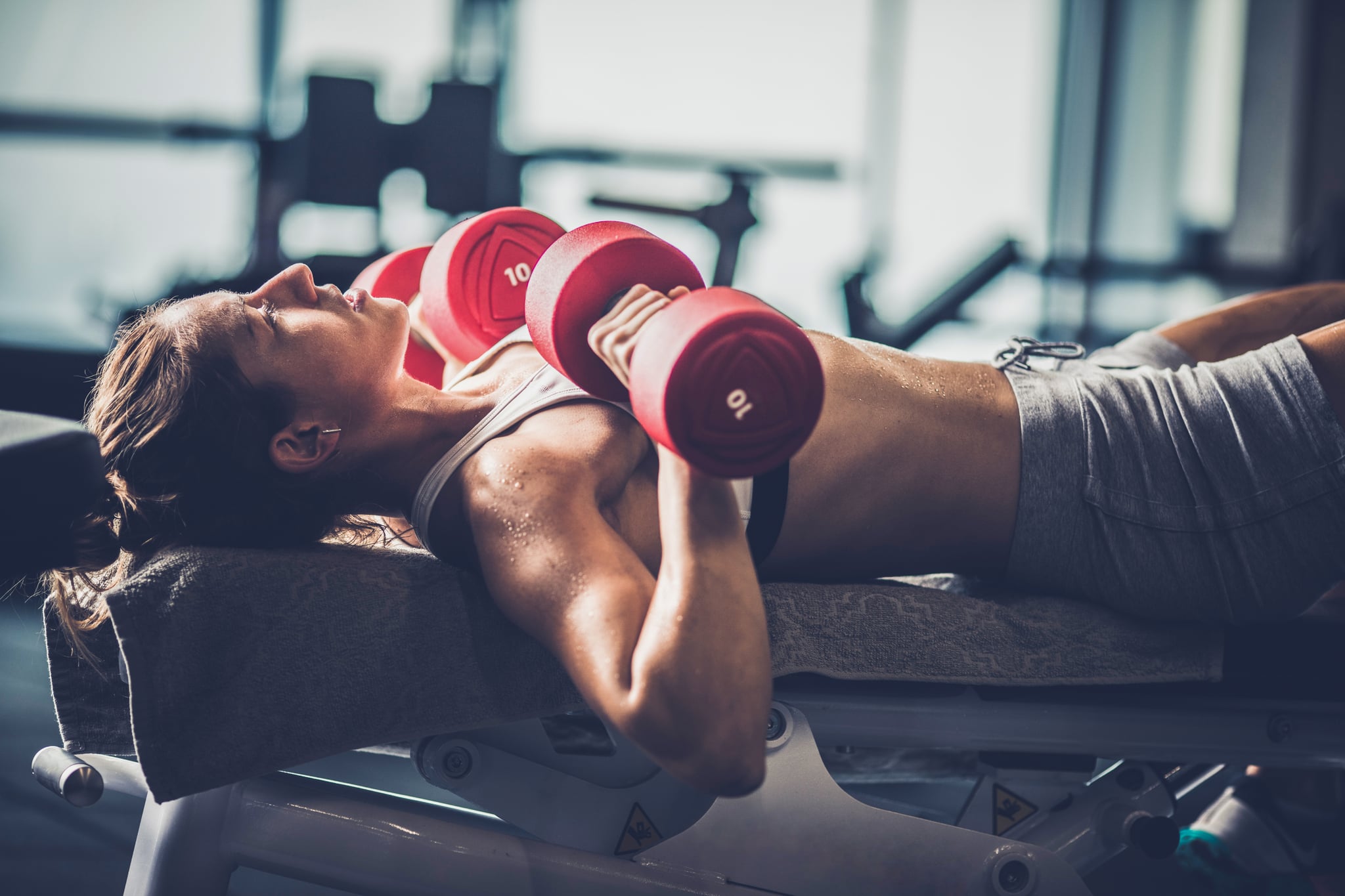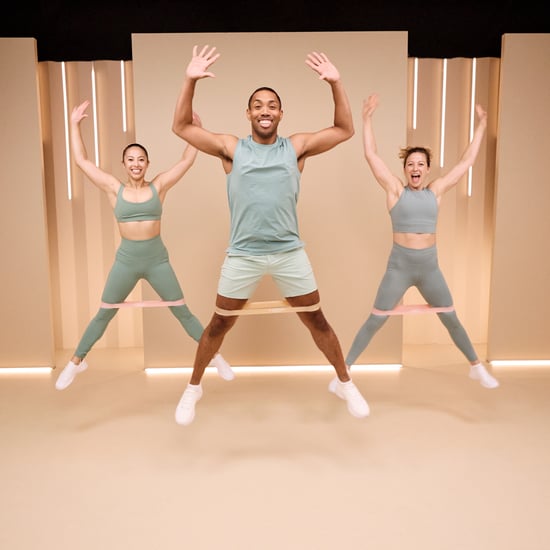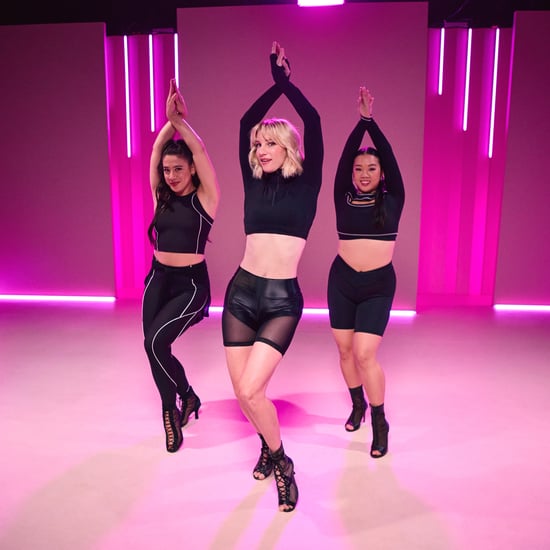How Do I Treat Sore Chest Muscles?
Bench Presses Got Your Chest Feeling Extra Sore? Here's What to Do, According to 2 Experts

So, your chest is sore the day or 48 hours after a hard workout. Congratulations! You're going through DOMS, or delayed onset muscle soreness. Though some professionals aren't exactly sure what causes DOMS, evidence suggests that the culprit is eccentric movements like squats and deadlifts where you're lowering your body under control and elongating the muscles, which leads to microtears and gradual inflammation. Let's break down what you can do.
The Number One Thing to Help With Any Sore Muscles
In a meta-analysis of almost 100 studies, active recovery, massage, compression garments, cold water immersion, contrast water therapy, and cryotherapy were the most effective forms of treatment for DOMS soreness. But physical therapists Karen Litzy, DPT, and Tyler Denn-Thiele, DPT, CSCS, both told POPSUGAR that the most important — and realistic method of treatment for people who are constantly busy and might not have access to some of these methods — is focusing on active recovery. That means, Tyler specified, doing any form of light exercise like walking, stretches that involve consistent movement (as opposed to static stretches), cycling, or light lifting that gets the heart rate up but doesn't place too much strain on your muscles.
Active recovery is essential, especially because of something called the "repeated bout effect," which is when sticking to a workout that made you sore eventually becomes easier, but you don't necessarily need to continue working out on those muscles. It's important to tone down the intensity and give your body the rest it needs if necessary, Tyler said. For example, if your muscle soreness is greater than a five out of 10 and does not go away with a warmup, maybe don't work that specific muscle group, he noted. For reference, a 10 would be you "can't get out of bed or walk without severe discomfort," he said.
How Do I Treat Sore Chest Muscles?
"Sore chest muscles are common after overhead activities including tennis, volleyball, baseball and softball, and of course a chest-heavy workout," Tyler told us. He pointed out that the primary recovery techniques you should focus on are proper nutrition, sleep, and hydration, and Karen agreed. DOMS experience in any part of your body can benefit from eating a well-balanced diet with enough carbs and protein (adding in tart cherry juice and protein-packed chocolate milk has been shown in some studies to have a positive effect on recovery, Karen noted).
You might also want to try compression garments, Karen said, "because they reduce exercise-induced muscle damage and inflammation." She added that cold water immersion is proven to help with the discomfort of DOMS, as well, though noted that taking an ice bath for your pecs would mean you'd have to really get in the water and might not be a practical method of recovery for some people. Again, any active movement will benefit soreness — and heating pads can potentially help with the discomfort, too, though they won't speed up recovery, Tyler said. (For an in-depth look on whether ice or heat is better for sore muscles, read this article.)
Tyler said you can do an active stretch where you place a foam roller length-wise along your spine with your arms out in front of you and palms together; then, lower your arms to either side of you with your palms facing up until they reach the floor and come back to the starting position. Make sure your head is supported on the foam roller as well, he said, adding that if it's too uncomfortable, you can try it on the floor without a roller and "progress once you can get your hands flat on the floor with your elbows extended." You can find a video of this stretch here or see it below:
Note: Here's When You Should See a Doctor
As always, be wary of how long you're feeling soreness and any pain that may occur. Things to look out for include high-level soreness that persists longer than five days even after you're resting properly, Tyler specified. If this happens, you should consider seeing a doctor. Karen added the following symptoms as red flags: profound weakness in your legs or hands, significant muscle atrophy, and bowel or bladder issues function. Cola-coloured urine may indicate rhabdomyolysis, which is the rapid breakdown of skeletal muscle tissue that could lead to kidney failure if left untreated. Ultimately, don't be afraid to work out on sore muscles, but listen to your body and make sure you actually get the rest you need.








